How to improve your irrigation system
Related Articles
Many golf clubs across the UK have irrigation systems that are just not working to their optimal abilities. This doesn’t necessarily mean the irrigation systems are inadequate; in many instances they may just need some fine-tuning, writes Peter Corbett and Peter Robin.
One of the cheapest methods to make your irrigation system work better, and one that’s almost always overlooked, is to check your sprinkler nozzles. You wouldn’t spray those expensive chemicals onto your turf without making sure you had fitted the correct spray boom nozzles for the job in hand and that they were checked for wear, so why ignore the nozzles in your irrigation?
Every pop-up sprinkler on the market has a range of nozzles you can install into it. Take the Rainbird Eagle 751 for example. It will arrive with a standard #40 orange nozzle, but there are eight different nozzles to choose from in the standard range, plus a further three wind-tolerant nozzles, so the chances that your standard nozzle is correct for your system are low. Did anybody actually figure out what nozzles you needed in the first place?
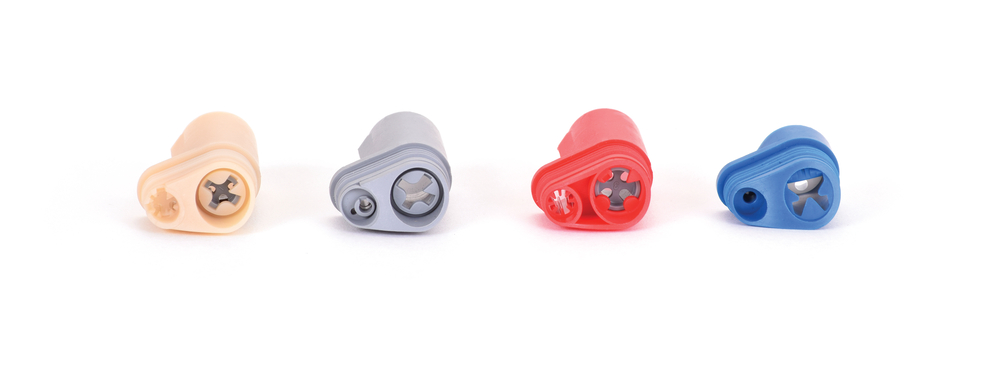
Different nozzles for diverse situations
To find out which sprinkler nozzle you should be using, the best way is to start with a nozzle performance chart. You should be able to download one for your sprinkler model off the web. You will notice on the chart that each nozzle will throw the water a different distance depending on how much pressure it is receiving.
Questions to ask. Are your existing sprinklers ‘dumping’ large droplets out onto the green, and are you having problems with dry patch (often occurs about four to six metres away from a sprinkler incidentally)? Can you see gaps in the ‘rain curtain’; the water falling to the ground from your sprinkler? If so, it could be that the nozzles in your sprinklers are too big. To help rectify the system and potentially make it more effective, simply look on the chart and select a nozzle a couple of sizes smaller.
A smaller nozzle can often make a big difference. When you install the smaller nozzle you will inadvertently reduce the flow rate; this in turn will often help the irrigation pump deliver a higher pressure, since flow rate and pressure have an inverse relationship for most centrifugal pumps.
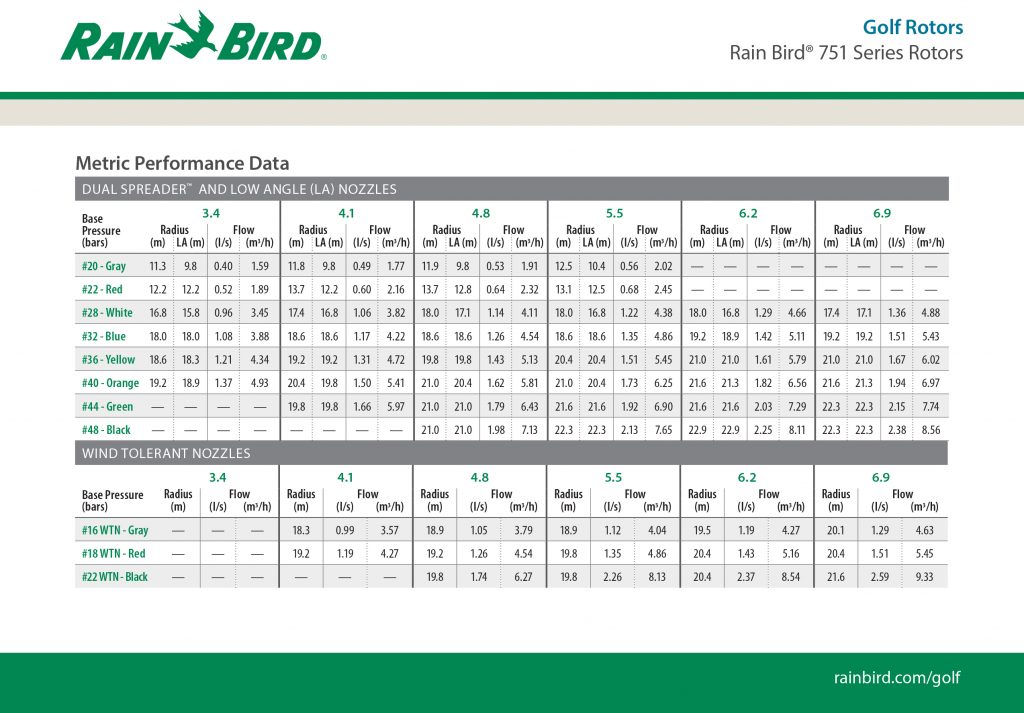
Nozzle performance chart
This increased pressure will often throw the water further across the green; it will help create smaller droplets and will potentially create the ‘rain curtain’ that each sprinkler should be achieving.
This is because the sprinkler requires a good pressure to disperse the water uniformly out of the nozzle.
This is often the cheapest way to make a big difference to the effectiveness of your irrigation system. A new nozzle might cost a few pounds, so replacing a whole golf course will still add up to a few hundred pounds, but compared with the cost of sprinkler replacement or upgrading your pump system, we’re talking peanuts. It might just be something worth thinking about before next season’s hot weather arrives.
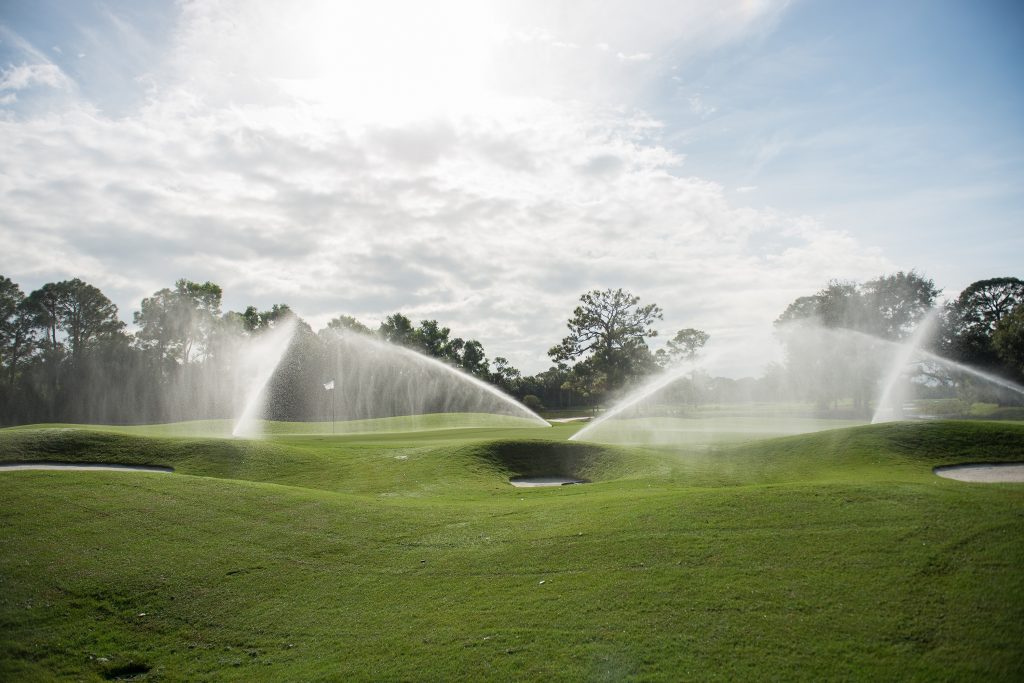
Rain Bird ‘rain curtain’
OK, all well and good so far.
You’ve checked your nozzles, consulted the charts, checked pressures and done a visual assessment of the quality of your ‘rain curtain’. Important yes, but it does not tell the whole story and that is the primary requirements for the intelligent use of water is knowing how much you require on your turf surfaces to achieve the desired standard.
Water content in the soil can be measured in different ways. A tensiometer sensor measures the matrix water potential, or soil moisture tension in the root zone. However, such equipment is suitable for use on fixed irrigation monitoring equipment but not for moving around multiple greens on a golf course.
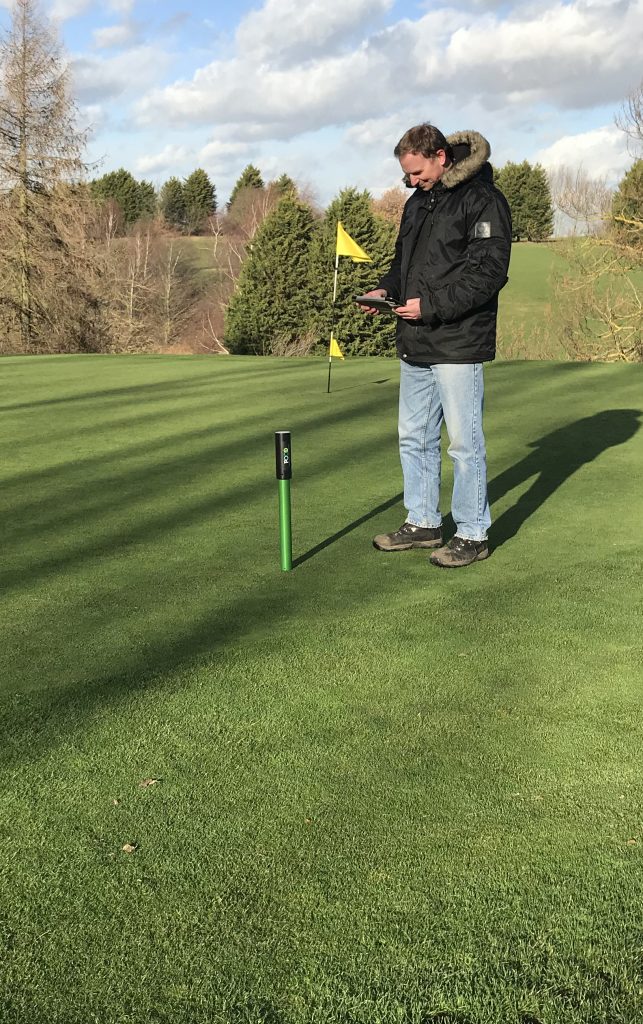
POGO allows you to measure, record and react to the information provided
On an 18-hole golf course, greenkeeping requires knowledge of, and be able to measure the, volumetric water content (VWC), expressed as a percentage, in many different areas of the course and, on a range of constructions. This can be achieved using equipment that can measure the dielectric impedance of the soil and return a reading in a VWC percentage. There are a number of moisture meters that use this technique but many have to be calibrated in order to give correct readings.
Greens have very variable moisture levels depending on a range of factors. Traditional methods of moisture measurement, as indicated above, sample the same area and monitor how levels change over time using a grid system. This all requires calibration to give correct readings, requiring time consuming manual recording of information and manual interpretation.
What is the alternative?
The POGO uses the unique HydraProbe sensor, which has four measuring prongs and does not need calibrating. It has a built-in GPS detector, so it knows where it is anywhere on the course, using a novel app via Bluetooth. This automatically saves the data to a mobile phone to be collected and recorded without the need for pen and paper.
- Sample position
- Soil moisture
- Surface temperature
- Soil EC
- Soil salinity.
A major feature of the POGO system is its ability to connect to the ‘Cloud’, which becomes your internet-based filing cabinet and report writer.
The Cloud holds all your data and contains the interpretation software so it can be presented as maps, tables and graphs. Data collected can be over-laid onto maps and presented pictorially, like the moisture map, along with other important information including the area of the green.
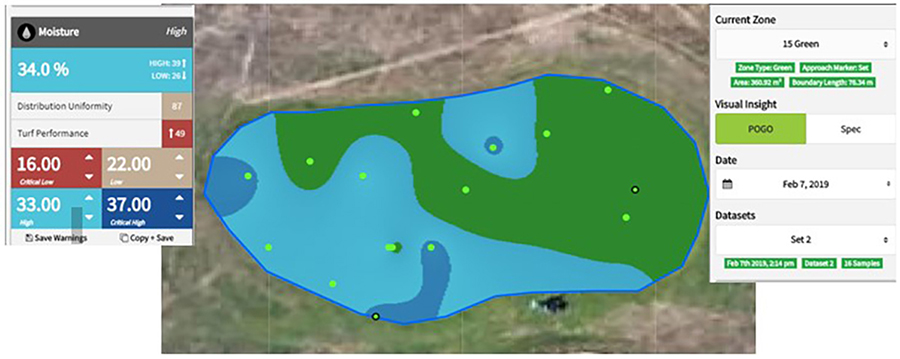
POGO water management moisture map on a golf green
The GPS system used by the POGO can also provide a GPS map of all your course assets; sprinkler pop-ups, irrigation infrastructure, paths, electrics and so on. The system can also be used to record any numeric value used to measure criteria, for example ball speed, uniformity, firmness. Also, the system can record the historical positioning of pins and produce a pin sheet for tournaments which can either be printed or posted on the club website.

Peter Corbett

Peter Robin
Peter Corbett and Peter Robin are Rigby Taylor product management specialists.

























